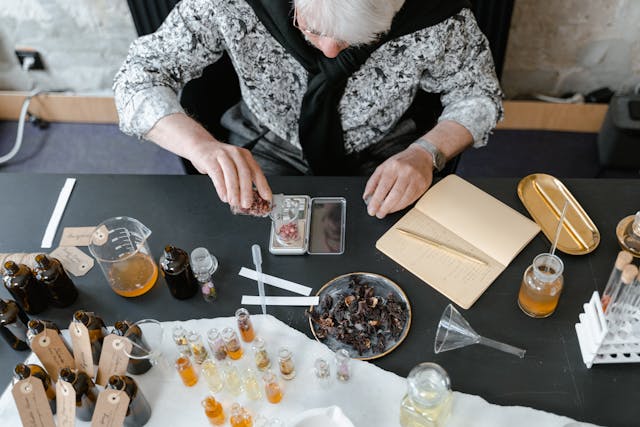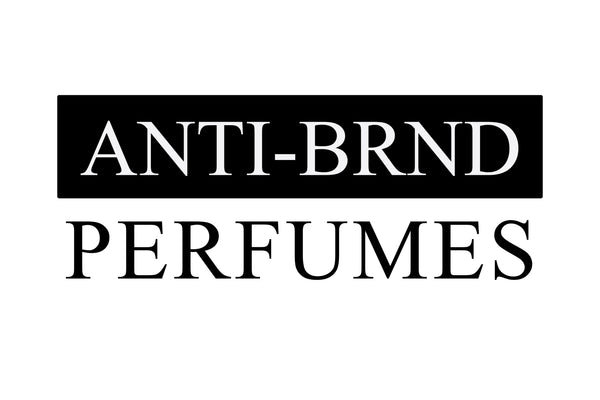
How Perfumes Are Made: A Behind-the-Scenes Look at Your Favorite Fragrances
Share
Have you ever wondered what goes into making your favourite bottle of perfume? It’s more than just a mix of wonderful smells, it’s a perfect blend of science, art, and nature. Right from harvesting flowers to blending oils in a lab, making perfume is an enthralling process.
Let’s understand how perfumes are made—step by step.
Step 1: Collecting the Raw Ingredients
Perfume making begins with obtaining raw materials, which are categorized as:
Natural ingredients:
- Flowers like rose, jasmine, and lavender
- Fruits such as lemon, orange, and apple
- Spices like cinnamon, cardamom, and pepper
- Woods & resins such as sandalwood and frankincense
Synthetic ingredients:
- Aroma molecules created in a laboratory
- Mimic or improve natural scents
Step 2: Extracting the Fragrance Oils
Once ingredients are collected, the scent must be extracted. Different materials require different procedures:
Steam Distillation
It is used for flowers, leaves, and herbs. Steam brings out essential oils, which are then cooled and gathered.
Solvent Extraction
It is best for delicate flowers like jasmine. Solvents bring out the aromatic compounds, which are then separated from the solvent.
Cold Pressing
This is generally done for citrus peels. The oil is mechanically pressed out without the use of heat.
Enfleurage (Traditional Method)
Flower petals are placed on sheets of fat, which absorb their scent. It is not used today but still used in luxury perfume manufacture.

Step 3: Blending the Fragrance
This is the basis of perfume-making. Expert perfumers referred to as “noses”, combine oils to create a distinct scent.
They create the perfume in layers, often referred to as the fragrance pyramid:
Fragrance Pyramid: Notes and Duration
| Layer | Notes Include | Duration |
|---|---|---|
| Top Notes | Citrus, herbs, light florals | First 15–30 minutes |
| Heart Notes | Rose, jasmine, spices | 2–4 hours |
| Base Notes | Musk, vanilla, oud, woods | 4–8+ hours |
This crucial balance gives the perfume its constitution and durability.
Step 4: Maturing the Perfume
After blending, the perfume concentrate is mixed with alcohol (and sometimes water) and permitted to mature. This aging process is known as maceration. This process can continue for a few weeks to several months.
Maturation allows the ingredients to blend, creating a smoother, more refined scent.
Step 5: Filtering and Bottling
After aging, the perfume is filtered to eliminate any residue or cloudiness. After this it can be bottled!
Perfume is packaged as per the degree of concentration:
Perfume Types and Longevity
| Type of Perfume | Fragrance Oil % | Lasts For |
|---|---|---|
| Parfum / Extrait | 20–30% | 8–12 hours |
| Eau de Parfum (EDP) | 15–20% | 6–8 hours |
| Eau de Toilette (EDT) | 5–15% | 3–5 hours |
| Eau de Cologne (EDC) | 2–4% | 1–2 hours |
Frequently Asked Questions
1. What are the main components in perfume?
Perfumes generally have fragrance oils (natural or synthetic), alcohol, and water. Essential oils from flowers, fruits, woods, or spices are common sources of fragrances.
2. How are the scents extracted from natural ingredients?
Scents are extracted using processes like steam distillation, solvent extraction, enfleurage, or cold pressing, based on the raw material.
3. What’s the difference between top, middle, and base notes in perfume?
Top notes are the first scents you smell, middle (heart) notes form the main body, and base notes are the enduring fragrances that one can smell as the perfume settles.
4. How long does it take to make a perfume?
Perfume making can require weeks to years. It involves formulation, stability testing, and at times aging the blend for better amalgamation.
5. Are synthetic fragrances bad or unsafe?
No, synthetic fragrances are not fundamentally bad. They help mimic unique or unsustainable scents, and many are comprehensively tested to ensure safety.
6. What is the role of alcohol in perfume?
Alcohol acts as a carrier and helps with the uniform distribution of the fragrance. It also helps the perfume evaporate, releasing the scent in a gradual manner.
7. Can perfumes be made without chemicals or alcohol?
Yes, alcohol-free perfumes are available that are made using oil bases or water, often sold as natural or organic, though they may not last long.
8. How do perfumers (noses) create a new scent?
Perfumers combine different aromatic compounds, test various combinations, and try different ratios until the fragrance profile that is desired is obtained.
9. What’s the difference between Eau de Parfum and Eau de Toilette in the making process?
The main difference is in the concentration of fragrance oils. EDP has a higher concentration than EDT, as this makes it luxurious and longer-lasting.
10. Is there a sustainable or eco-friendly way to make perfumes?
Yes, many brands now opt for sources that are sustainable, biodegradable packaging, and clean lab processes to reduce the impact on the environment.
Final Thoughts
Perfume-making is much beyond just mixing good-smelling oils. It’s a delicate art that is a perfect mix of tradition with technology. Every bottle is special in its own way. Every bottle goes through a comprehensive process right from the fields where flowers bloom to the hands of skilled perfumers who bring out their wonderful scents.
So, remember your favourite perfume is a beautiful mix of art and science.
